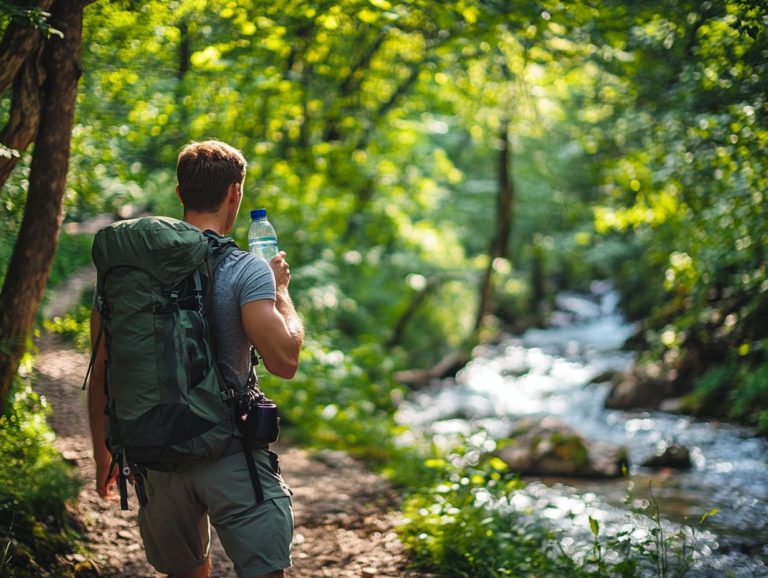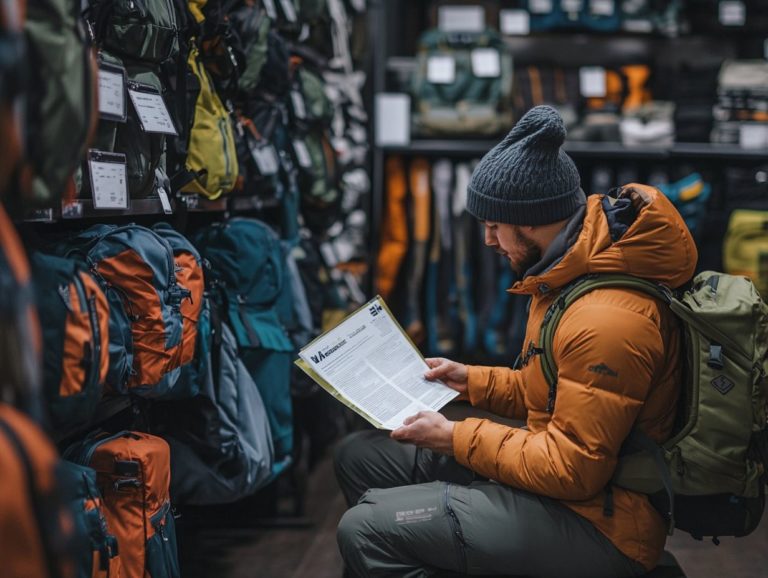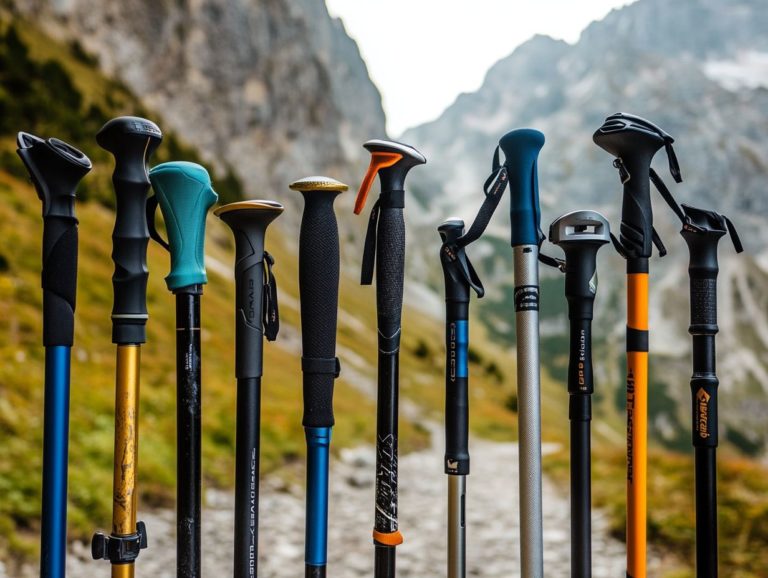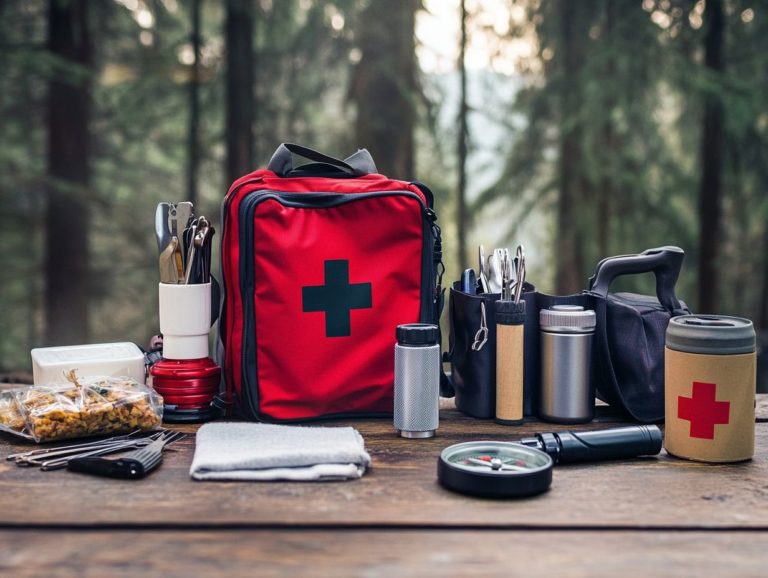How to Stay Safe in Water Sports?
Water sports can be exhilarating, providing a unique blend of adventure and relaxation that few experiences can match. However, with that excitement comes a certain level of responsibility.
It’s essential to understand the various risks involved to ensure your experience is both safe and enjoyable. Explore critical safety measures, highlighting the importance of protective gear, essential water safety training, and effective hand signals for communication out on the water.
You ll also find valuable tips for common activities like swimming, boating, surfing, and kayaking. Let s dive into the fun!
Contents
- Key Takeaways:
- Understanding the Risks
- Essential Safety Measures
- Water Safety Training
- Common Water Sports and Safety Tips
- Frequently Asked Questions
- What are some essential safety precautions for water sports?
- How can I ensure my equipment is safe and suitable for water sports?
- What should I do if I get caught in a strong current while swimming or diving?
- Are there specific rules for water sports safety?
- How can I prevent sunburn while enjoying water sports?
- What should I do if I see someone in danger during water sports?
Key Takeaways:
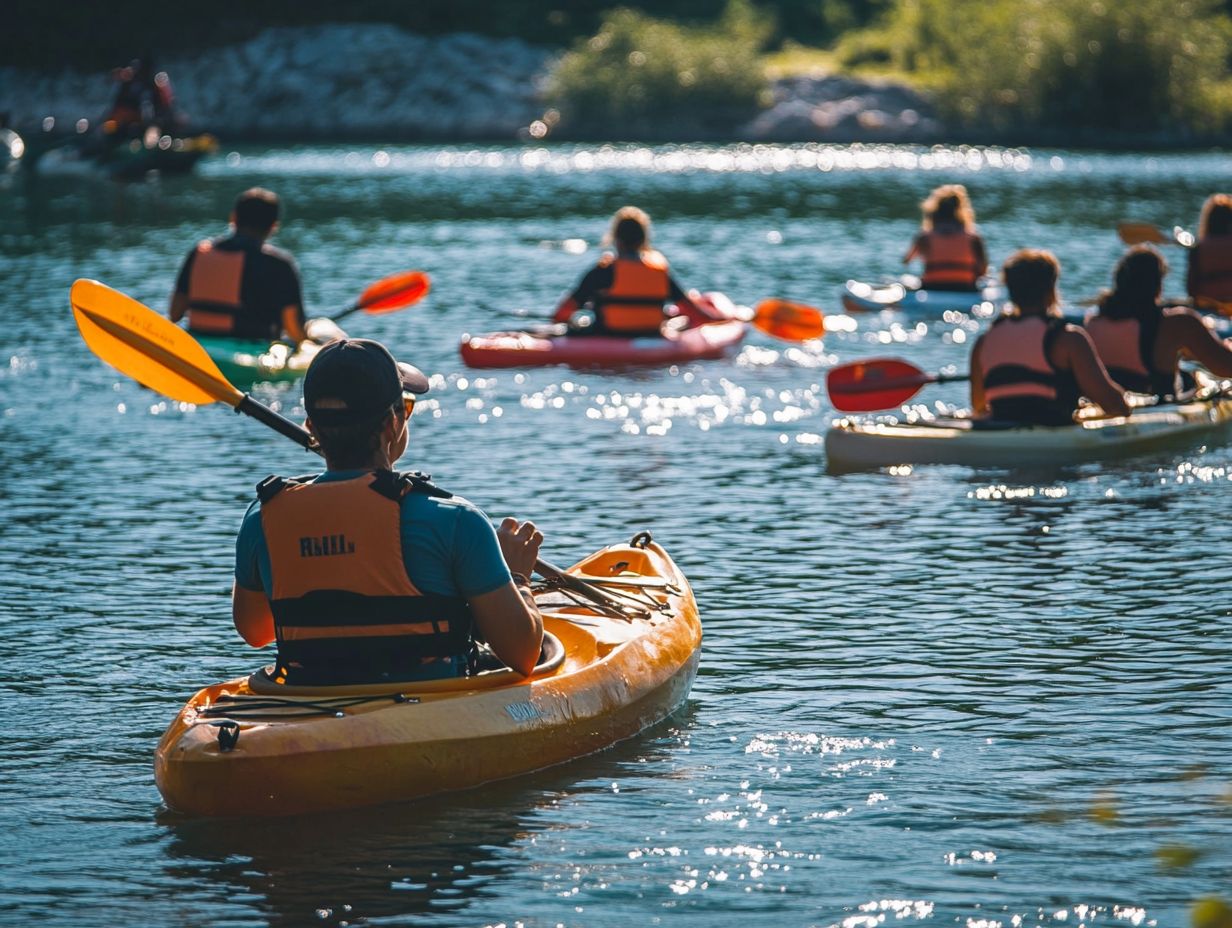
- Always assess the risks involved in water sports and take proper precautions to stay safe.
- Invest in and properly use protective gear and equipment to minimize the potential for injury.
- Get proper training and knowledge on water safety before participating in any water sport to ensure a safe and enjoyable experience.
Understanding the Risks
Understanding the risks associated with watersports is essential for your safety when engaging in activities like boating, wakesurfing, kayaking, and swimming. Be aware of water temperature, the dangers of overloading inflatables, unpredictable weather conditions, and the risk of dehydration from sun exposure.
It’s also crucial to wear a life jacket or personal flotation device to stay safe. Recognize the dangers of overloading inflatables, especially inflatable tubes, and understand how off-shore winds can affect the stability of your watercraft.
By educating yourself about swimming basics and practicing CPR, you can further reduce risks, ensuring a safer and more enjoyable experience on the water.
Essential Safety Measures
Implement essential safety measures to ensure your well-being while enjoying watersports like boating and wakesurfing. Always wear a life jacket, as it can be a lifesaver in unexpected situations.
Designate a spotter for activities like towing inflatable tubes; their role is key in maintaining safety. Use effective hand signals for clear communication between you and the boat driver.
Be prepared for emergencies. It s essential to have a survival kit and a well-stocked first aid kit on board to address unforeseen circumstances while you re out on the water.
Protective Gear and Equipment
When participating in watersports, having the right protective gear and equipment is vital for ensuring your safety and maximizing your enjoyment. A properly fitted life jacket is essential for all water activities, including boating and wakesurfing.
Regularly inspect inflatable tubes and watercraft to guarantee they meet safety standards and are free from leaks or damage. Choose the right life jacket by considering factors like size, buoyancy, and the type of activity you’re engaging in to receive optimal support.
It s crucial to select jackets approved by recognized safety organizations. Maintain these jackets with regular cleaning and inspection for wear to ensure their effectiveness.
Likewise, inflatable tubes require a meticulous check for punctures and air retention before each use. Before setting out on any watercraft, verify safety compliance by checking your life vests, emergency kits, and stability features.
This diligence will enhance the overall safety of your experience and allow you to enjoy the water with peace of mind.
For more information on water safety, explore additional resources or share this information with friends!
Water Safety Training
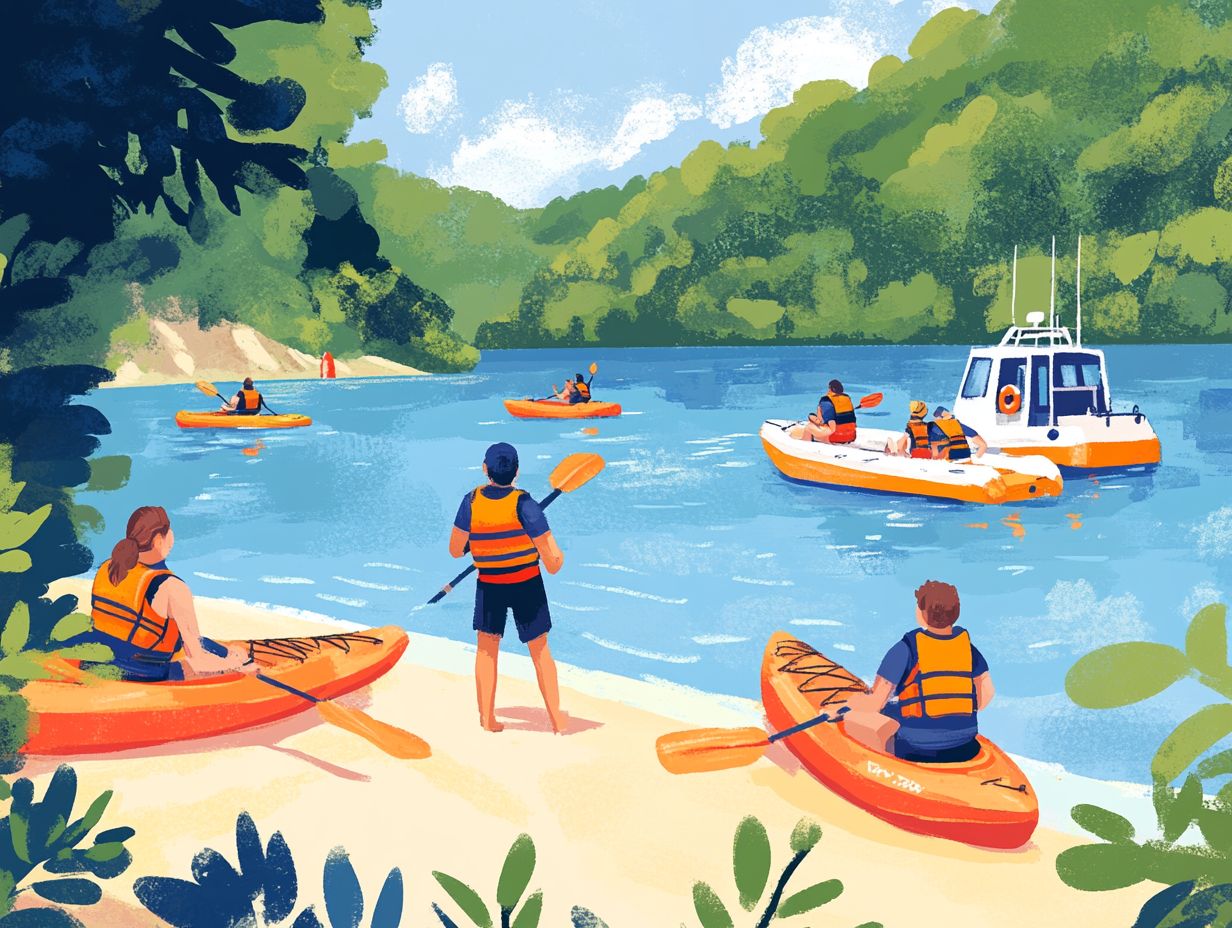
Water safety training is your key to enjoying watersports safely! It equips you with essential knowledge that can save lives. Organizations like the American Red Cross and the National Safety Council offer courses covering vital skills such as CPR (Cardiopulmonary Resuscitation) and swimming basics, which are critical for ensuring safety in boating, wakesurfing, and other aquatic activities.
By participating in these training sessions, you can prepare yourself for emergencies and deepen your understanding of water safety. These programs often blend hands-on practice with theoretical lessons, catering to all skill levels, from beginners to advanced participants. Everyone will learn essential boating rules and water safety measures.
Beyond just CPR and swimming proficiency, training also covers recognizing hazardous conditions, the proper use of safety equipment, and the importance of personal flotation devices (PFDs). Reputable organizations not only conduct these training sessions but also provide certification, lending credibility to the skills you acquire.
By making water safety education accessible, they significantly reduce the risks associated with water activities, leading to safer and more enjoyable experiences on the water.
Common Water Sports and Safety Tips
Engaging in popular watersports like boating, wakesurfing, kayaking, and swimming can be exhilarating. It’s essential to follow safety tips, such as wearing a personal flotation device and staying hydrated to prevent dehydration.
Each type of watersport carries its own unique risks, so familiarize yourself with specific guidelines and precautions:
- When boating, always adhere to the established rules and maintain a safe distance from other vessels.
- Wakesurfing always requires a designated spotter.
- Kayaking and swimming necessitate knowing the water temperature and how currents behave to prevent accidents.
Swimming
Swimming is a fundamental skill crucial for safety in watersports. It demands a solid grasp of the basics and water safety practices to be effective. Knowing how to swim properly enhances your enjoyment and equips you to handle emergencies with confidence.
Embrace safety tips, like swimming with a buddy and being aware of local water conditions to significantly reduce your risks.
Master essential techniques such as floating, treading water, and executing efficient strokes. These skills can greatly boost your confidence in various aquatic settings. Always take time to familiarize yourself with the specific characteristics of the water, whether it s a serene lake or a rushing river.
Understanding the importance of wearing PFDs, having a designated spotter, and being aware of changing weather conditions can make a world of difference in ensuring safety. To enhance your knowledge further, check out what to know about water sports etiquette. Prepare diligently and stay informed to fully enjoy your aquatic adventures while minimizing potential dangers.
Boating
Boating offers exhilarating adventures, but it requires a commitment to safety tips to prevent accidents. As the boat driver, grasp the significance of weather conditions and follow boating regulations to maintain safety. Regularly inspect your boat and ensure all passengers wear life jackets to elevate safety standards.
Staying informed about local regulations is crucial, as they can vary by region. This includes understanding specific speed limits, designated swimming areas, and any no-wake zones that may apply.
Be ready for sudden weather changes; storm clouds can appear unexpectedly, requiring quick action on your part.
Having a first aid kit on board, ensuring your communication devices are functional, and developing an emergency plan can enhance safety. Promptly adjust the boat’s speed and course when conditions shift to protect passengers and elevate the overall boating experience.
Surfing
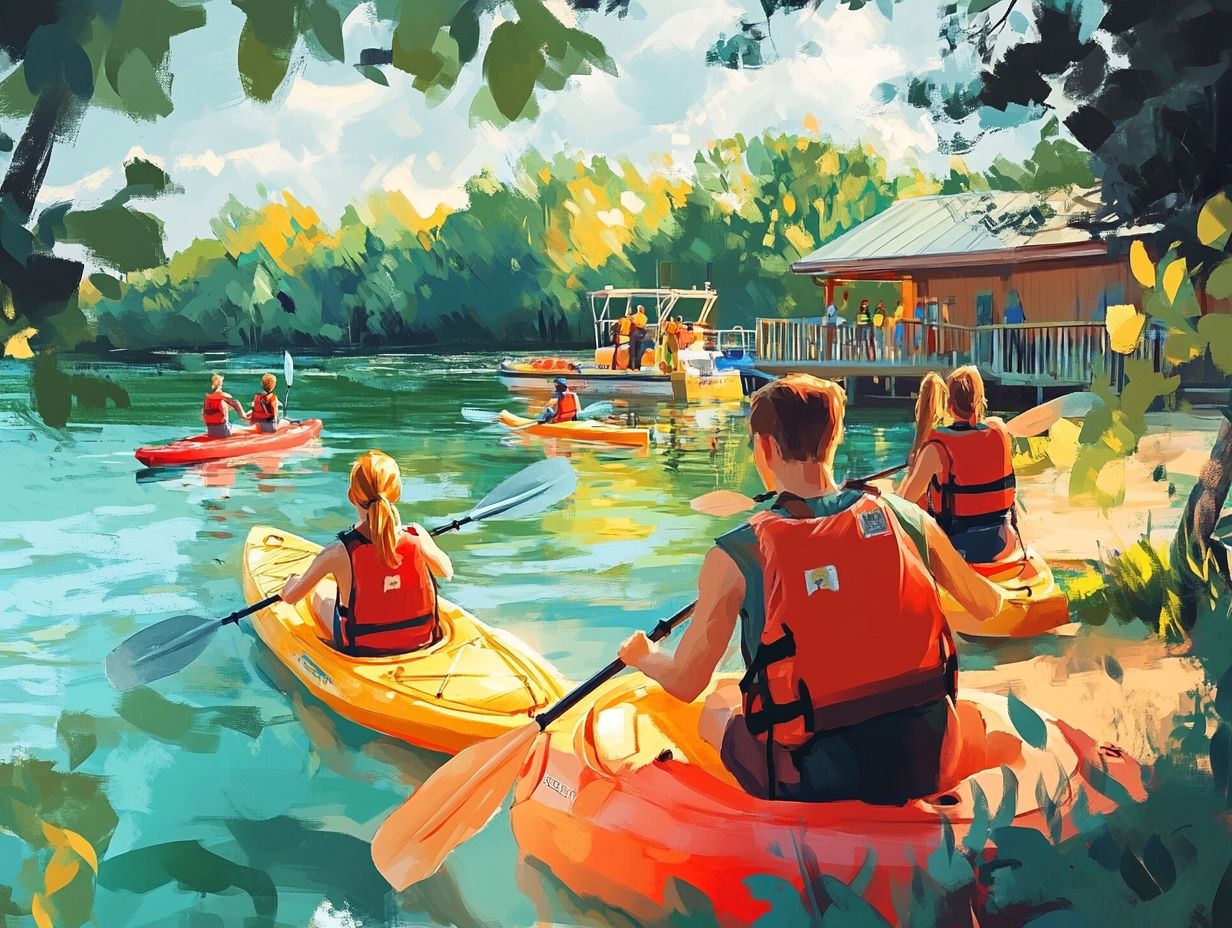
Surfing offers exhilarating challenges! Embracing a few safety tips is essential for a secure and enjoyable experience. Understanding water conditions like wave patterns and currents is crucial for your success as a surfer.
Before you paddle out, wear the right safety gear and stay aware of fellow surfers to enhance overall safety.
Conduct thorough equipment checks before heading out. Inspect your board for any dings and ensure your leash is securely fastened. These small steps can make a big difference!
Familiarity with local surf etiquette like avoiding dropping in on someone else’s wave and respecting priority rules maintains harmony among surfers. Understanding environmental factors such as tides, winds, and potential hazards like rocks or reefs also minimizes risks.
Stay alert and use hand signals to create a fun and safe atmosphere in the water. This way, everyone can relish the thrill of riding the waves together!
Kayaking
Kayaking presents a peaceful opportunity to explore waterways! However, embracing safety tips is vital for a rewarding experience. Assess the weather conditions and ensure your watercraft is in top-notch shape before you set off.
Don a life jacket a device that helps keep you afloat and familiarize yourself with the local waterways for added safety.
Conduct thorough equipment checks! Inspect your paddles, kayak, and safety gear before launching. Being aware of environmental factors like currents, tides, and potential obstacles helps you steer clear of unexpected hazards.
Have a reliable communication device handy and master basic rescue techniques for extra security. Paddle in pairs or groups to enhance safety through shared vigilance.
By prioritizing these considerations, you can immerse yourself in the natural beauty around you while minimizing risks.
And More…
Besides surfing and kayaking, exploring other water sports like jet skiing and paddleboarding is essential. Each sport comes with its own safety tips. For instance, always wear a life jacket and understand the unique risks each sport brings.
Having a comprehensive knowledge of water safety can significantly reduce the chance of accidents. This ensures you have a safe, enjoyable experience on the water.
Take jet skiing, for example. Maintain a safe distance from other watercraft and stay vigilant about weather conditions that could impair visibility.
Paddleboarding, often perceived as leisurely, demands a solid grasp of currents and wave patterns, especially in open waters.
Don’t overlook vital safety measures! Understanding hand signals gestures used to communicate with others in the water and mastering effective self-rescue techniques are crucial.
Each watersport presents distinct challenges, reinforcing the importance of wearing life jackets. Water safety regulations vary by region, and they mandate these practices to safeguard public safety and enhance enjoyment for everyone involved.
By adhering to these guidelines, you can fully immerse yourself in the thrill of your chosen sport while keeping risks at bay!
Frequently Asked Questions
What are some essential safety precautions for water sports?
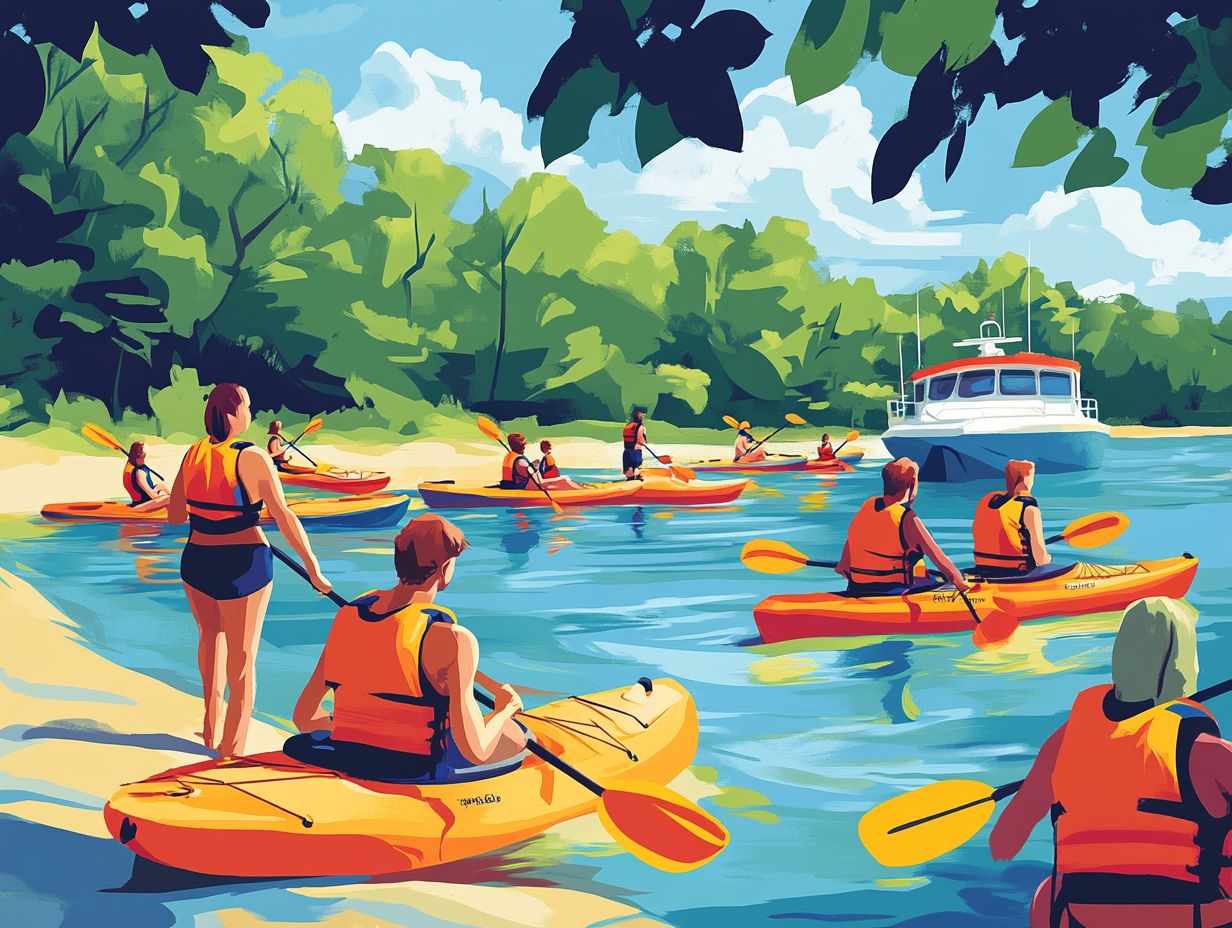
Some important safety measures include wearing a life jacket, having a buddy system, being aware of weather conditions, and knowing how to swim.
How can I ensure my equipment is safe and suitable for water sports?
Check that your equipment is well-maintained and fits you properly. This includes ensuring there are no defects or damages before use.
What should I do if I get caught in a strong current while swimming or diving?
If you find yourself in a strong current, do not panic! Swim parallel to the shore until you are out of the current, or use a flotation device to keep yourself afloat. Call for help if needed.
Are there specific rules for water sports safety?
Each water sport has its own safety rules. Learn these rules before you participate to keep yourself and others safe.
How can I prevent sunburn while enjoying water sports?
To protect your skin from sunburn, apply waterproof sunscreen before you get in the water. Wear a hat and protective clothing. Take breaks in the shade whenever you can.
What should I do if I see someone in danger during water sports?
If someone is in distress, call for help immediately. If it’s safe, try to assist them, but never put yourself in danger.


